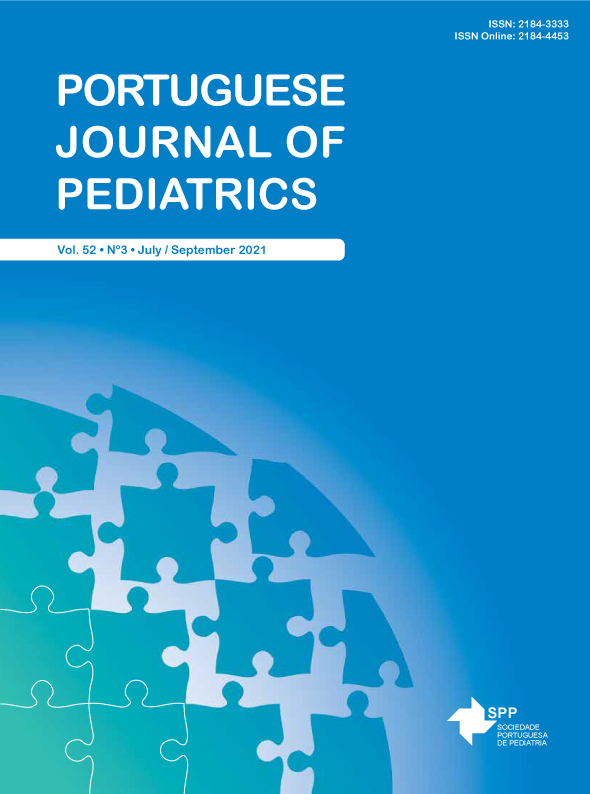Achondroplasia in the First Years of Life – Importance of Early Referral to Pneumology
Date of submission: 09-11-2020 | Date of acceptance: 15-02-2021 | Published: 02-07-2021
DOI:
https://doi.org/10.25754/pjp.2021.21466Abstract
Introduction - Achondroplasia is the most common bone dysplasia and is associated with extreme, disproportionate shortness of stature. Early care is essential to identify risks and prevent serious sequelae. The American Academy of Pediatrics recommends conducting a polysomnography soon after the diagnosis of achondroplasia.
Materials and Methods - A retrospective study of children with achondroplasia referred to the multidisciplinary consultation in a central hospital in the first two years of life, between 2015 and the end of the first semester of 2020.
Results - Ten children with achondroplasia were referred. The first evaluation in a pneumology consultation occurred between 3 and 22 months. Four children presented with snoring. The polysomnography was carried out between 5 and 26 months, revealing obstructive sleep apnoea syndrome in seven children (including one with no snoring). The five with moderate/severe obstructive sleep apnoea syndrome were started on non-invasive ventilation. All of them maintain non-invasive ventilation, most with good adherence. One of the children underwent an adenotonsillectomy at 2 years of age and maintains ventilation. Magnetic resonance imaging of the brain showed stenosis of the foramen magnum in all children. In the nine children who did a polysomnography with no previous neurosurgical intervention, the rate of central apnoea was normal.
Discussion - The prevalence and the severity of obstructive sleep-disordered breathing in children with achondroplasia, especially in the first two years of life, justifies early referral of these patients. Non-invasive ventilation was the most frequently used therapy and constitutes a valid and effective therapeutic option.
Downloads
Downloads
Published
Issue
Section
License

This work is licensed under a Creative Commons Attribution-NonCommercial-NoDerivatives 4.0 International License.









